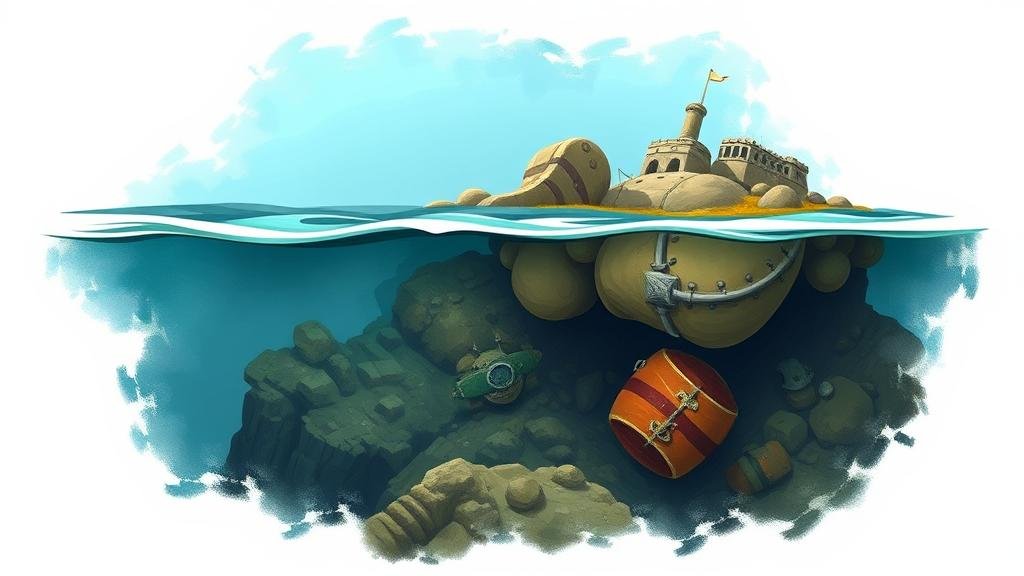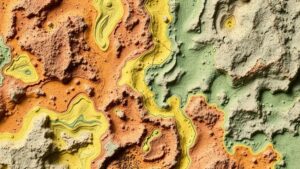Exploring Marine Archaeological Records for Submerged Treasure Sites
Exploring Marine Archaeological Records for Submerged Treasure Sites
The study of submerged treasure sites through marine archaeology has gained traction in recent decades, revealing invaluable insights into historical maritime activities. These endeavors not only enhance our understanding of aquatic cultures but also offer evidence of immense wealth lost to the seas. This article explores various methodologies, historical contexts, and case studies associated with submerged treasure sites, exemplifying their significance within the broader field of marine archaeology.
The Importance of Marine Archaeology
Marine archaeology is a specialized field that examines human interaction with the sea through subaqueous artifacts and sites. significance of these submerged treasures extends beyond their monetary value, as they provide a bridge to past civilizations and their economic practices. For example, it is estimated that over 3 million shipwrecks exist globally, many containing objects of historical importance, precious metals, and artifacts essential for understanding maritime trade routes.
Methodologies for Surveying Submerged Sites
To explore submerged treasure sites effectively, marine archaeologists employ a range of methodologies, including:
- Remote Sensing: Technologies such as side-scan sonar, magnetometry, and sub-bottom profiling are pivotal in detecting anomalies on the ocean floor. For example, the 2010 discovery of shipwrecks off the coast of North Carolina utilized side-scan sonar, which revealed outlines of submerged vessels.
- Underwater Excavation: Divers and remotely operated vehicles (ROVs) are utilized to retrieve artifacts. Notably, the excavation of the Spanish galleon Nuestra Señora de Atocha, sunk in 1622 near the Florida Keys, involved numerous underwater dives that yielded over $450 million in treasure.
- Historical Research: Reviewing historical documents and logs aids in forming hypotheses about potential wreck locations. For example, logs from the 17th-century Dutch East India Company helped archaeologists locate the remains of the ship the Geldermalsen, which sank in 1667.
Notable Case Studies
Several significant maritime archaeological endeavors illustrate the potential of submerged treasure sites:
- SS Central America: Known as the Ship of Gold, the SS Central America sank in 1857 while carrying gold to California. In 1987, a recovery mission led by Odyssey Marine Exploration retrieved approximately $100 million worth of gold ingots and coins, highlighting the economic motivations behind maritime treasure hunting.
- The Titanic: Sunken in 1912, the Titanic is not a traditional treasure site; however, underwater explorations have revealed priceless artifacts, which provide insights into early 20th-century maritime practices. recovery missions began in the late 1980s and have since documented over 5,000 items, each telling a story of its ill-fated voyage.
The Conservation of Maritime Treasures
As treasures are recovered, their preservation poses significant challenges. Materials such as wood, metal, and textiles deteriorate rapidly when exposed to air. Effective conservation strategies, including controlled environments, chemical treatments, and digital documentation, must be implemented to ensure these artifacts endure for future generations. An exemplary case is the conservation of artifacts from the Black Sea Shipwreck, which were preserved in an anaerobic environment, preventing decay for over 2,000 years.
Challenges and Ethical Considerations
The pursuit of underwater treasures is not without its challenges and ethical dilemmas. Issues surrounding ownership, the impact of treasure hunting on archaeological sites, and the potential for cultural degradation are critical factors that must be addressed. For example, the 2001 debate surrounding the archaeological site of the sunken Japanese battleship Musashi highlighted conflicts between treasure recovery efforts and cultural heritage preservation.
Future Directions in Marine Archaeology
As technology advances, the field of marine archaeology is poised for further exploration. Emerging tools, such as artificial intelligence and machine learning, promise to enhance the predictive modeling of potential submerged sites, enabling researchers to identify previously overlooked areas. Also, interdisciplinary collaborations among historians, conservationists, and marine engineers are essential for nurturing the future of maritime archaeology.
Conclusion
Marine archaeological records offer a unique lens through which to view our maritime past. By employing advanced methodologies and fostering an ethical approach to excavation, researchers can unveil the hidden narratives of submerged treasure sites. As we delve deeper into the world’s oceans, we must remember the importance of preserving these artifacts not only for their historical value but also for the stories they tell about humanitys relationship with the sea.



